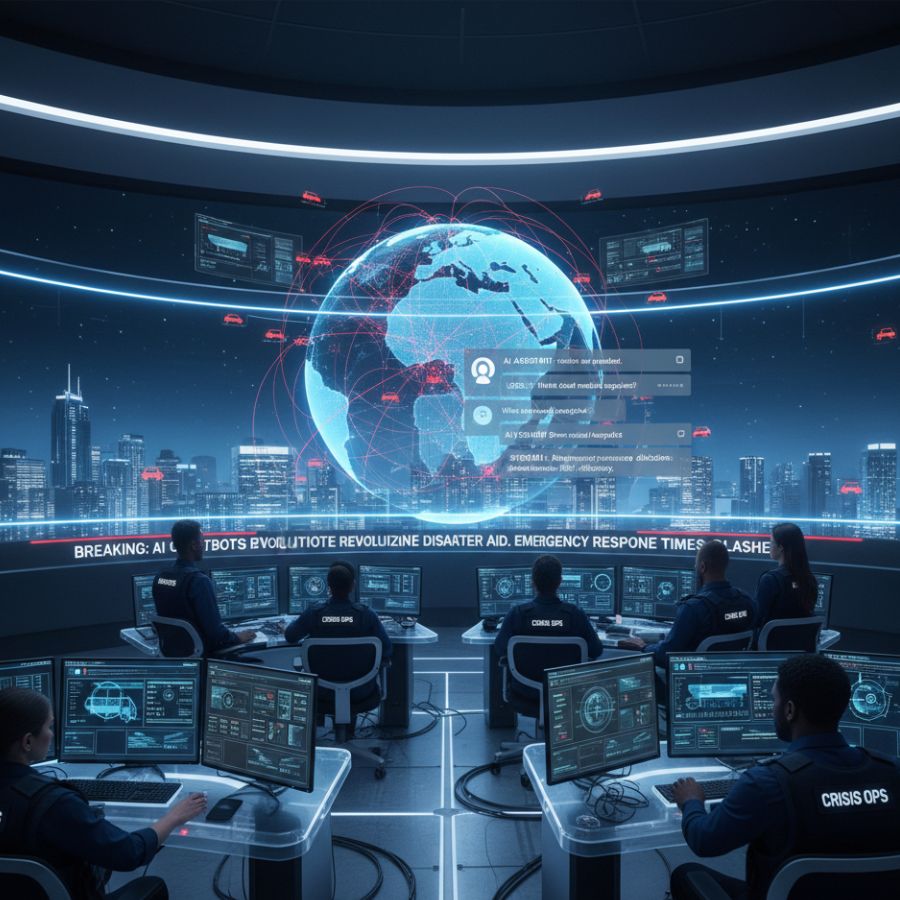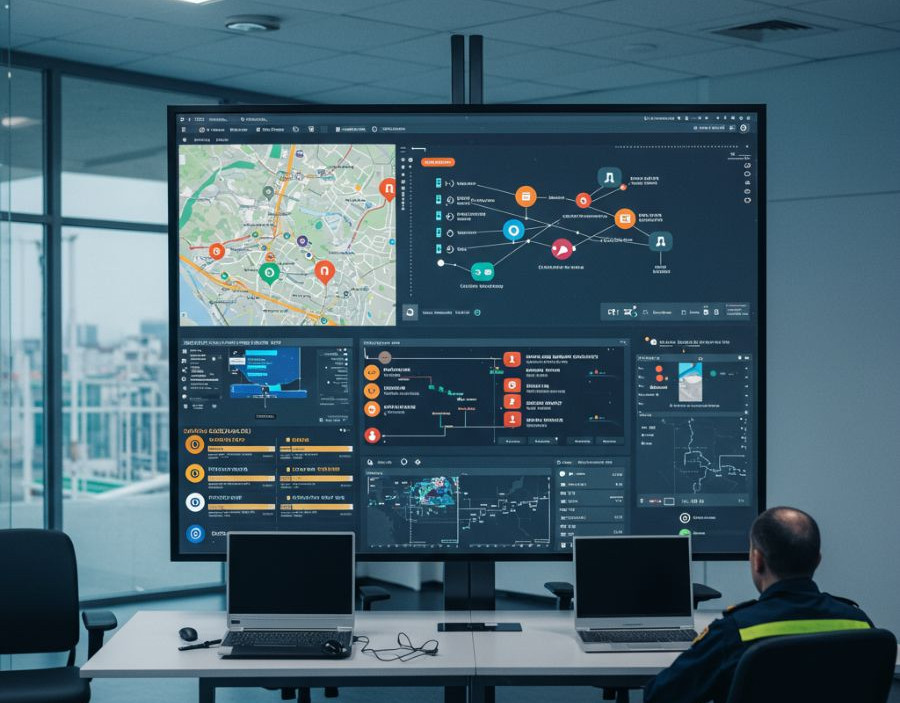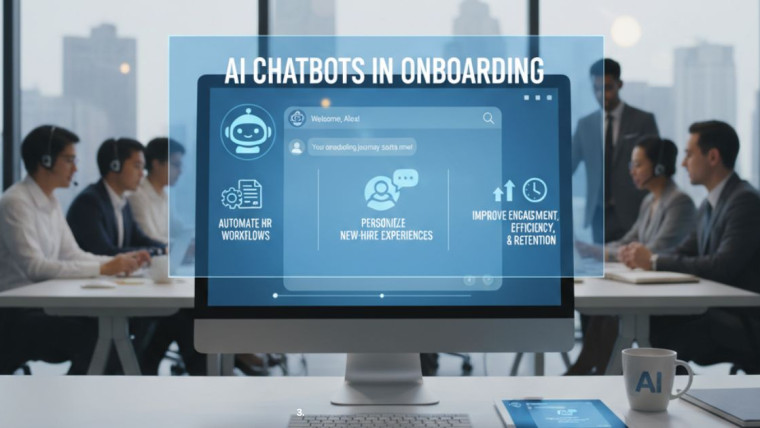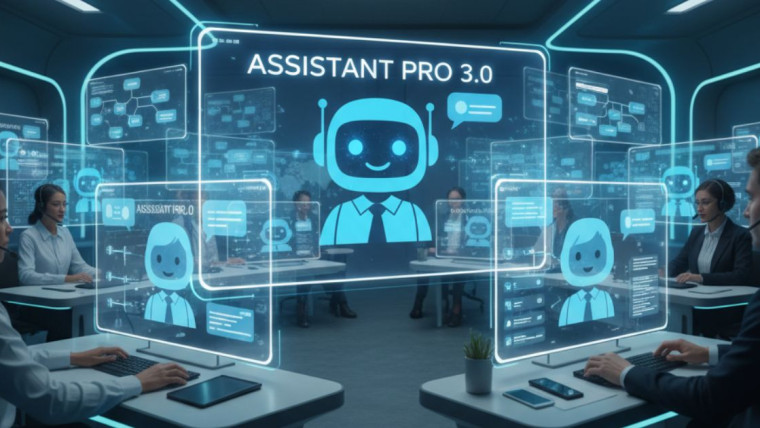Natural disasters, industrial accidents, and public health emergencies are becoming more frequent. Coordinating a fast response is critical to saving lives. Traditional communication channels often fail or get overloaded during crises, delaying help. Emergency response chatbots powered by AI are changing this. These innovative tools support disaster response technology by enabling governments, NGOs, and organizations to manage emergencies more efficiently. They provide real-time information, automate routine tasks, and connect people with the resources they need. By improving crisis communication and strengthening public safety tools, AI automated emergency systems can save valuable time—and lives—when every second counts.
What Are Emergency Response Chatbots?
Emergency response chatbots are specialized conversational AI systems trained to handle crisis scenarios. They provide real-time assistance through text or voice interfaces on websites, mobile apps, social media platforms, or dedicated messaging channels. Unlike generic customer service bots, these chatbots integrate with emergency data feeds, geographic information systems (GIS), and incident management platforms to deliver accurate alerts, safety instructions, and resource coordination. From guiding citizens to evacuation routes to dispatching first responders, these bots extend human teams with scalable, always-on support.
Key Benefits

- Instant Information Dissemination: Chatbots can push critical alerts, weather updates, and safety guidelines to large audiences simultaneously, bypassing overloaded phone lines or cellular networks.
- 24/7 Availability: AI-driven agents never sleep, ensuring continuous support during extended crisis periods or late-night emergencies.
- Multilingual Support: Modern NLP engines enable chatbots to converse in multiple languages, breaking down communication barriers in diverse communities.
- Resource Coordination: By integrating with logistics and inventory systems, chatbots can track supplies, allocate personnel, and coordinate volunteer efforts in real time.
- Data Collection and Analytics: Conversational interactions generate valuable data on casualty reports, infrastructure damage, and citizen needs, informing strategic decision-making.
Use Cases
Emergency response chatbots are being deployed across multiple sectors and scenarios:
- Natural Disasters: During hurricanes, earthquakes, or wildfires, chatbots deliver evacuation orders, shelter locations, and real-time weather tracking.
- Public Health Crises: In pandemics or outbreaks, chatbots handle symptom screening, vaccination scheduling, and public advisories, reducing pressure on healthcare hotlines.
- Industrial Accidents: Factories and chemical plants use bots to alert on-site staff, coordinate evacuations, and liaise with emergency responders.
- Terrorist Incidents: Security agencies deploy chatbots to guide civilians to safe zones, share threat intelligence, and collect eyewitness reports.
Designing Effective Emergency Response Chatbots
Building a chatbot for crisis management requires careful planning and domain expertise. Key design considerations include:
- Accurate NLP Models: Train on crisis-specific lexicons, local dialects, and technical jargon to ensure correct understanding under stress.
- Context Awareness: Maintain session history so the bot can adapt responses based on user location, reported conditions, and prior interactions.
- Fail-Safe Escalations: Implement triggers for handoff to human operators when queries exceed AI confidence thresholds or life-critical situations arise.
- Offline Functionality: Cache essential information and deploy via SMS or USSD for areas with intermittent internet connectivity.
- User-Centric UX: Simplify interfaces, minimize typing requirements, and use quick-reply buttons to reduce cognitive load during high-stress moments.
Integration with Existing Emergency Systems

To maximize impact, chatbots should integrate seamlessly with legacy emergency management platforms, GIS mapping tools, and team communication apps. RESTful APIs and standardized data formats, such as CAP (Common Alerting Protocol), enable real-time alert ingestion. Two-way integrations allow responders to send updates—such as resource deployments or incident clearance—back into the chatbot, keeping citizens informed and maintaining situational awareness across agencies.
Ensuring Data Security and Privacy
Handling sensitive personal and location data demands robust security measures. Encrypt data at rest and in transit, implement strict access controls, and anonymize user inputs when possible. Compliance with regulations like GDPR, HIPAA, or local privacy laws is essential, particularly in healthcare or cross-border operations. Regular security audits and penetration testing help maintain trust and resilience against cyber threats.
Overcoming Common Challenges
Deploying chatbots in crisis environments presents several challenges. Network outages, power failures, and misinformation campaigns can disrupt service. Mitigation strategies include multi-channel delivery (SMS, voice, app push notifications), offline data sync, human moderation to combat rumors, and fallback scripts for known failure modes. Continuous training with real incident data ensures bots learn from past shortcomings and improve response efficacy.
Real-World Success Stories
Several organizations have already demonstrated the power of emergency response chatbots. In 2022, a coastal city used a chatbot during a major hurricane to handle 80 percent of routine citizen inquiries, freeing call centers for high-priority cases. During a wildfire crisis, a regional agency deployed SMS bots to direct evacuees to safe zones, resulting in a 30 percent reduction in congestion on evacuation routes. In a pandemic scenario, a public health chatbot processed millions of symptom checks, enabling faster triage and reducing hospital overload.
Preparing for Implementation: Steps to Deploy in Your Organization
To launch an emergency response chatbot, begin by conducting a needs assessment with key stakeholders, including emergency managers, IT teams, and field responders. Define use cases, data sources, and success metrics. Partner with an AI vendor or leverage open-source frameworks, then pilot in a controlled environment. Incorporate feedback loops, train staff on escalation workflows, and run tabletop drills to validate performance before going live.
Tools and Platforms
Popular platforms for building crisis chatbots include Microsoft Bot Framework with Azure Maps integration, Google Dialogflow combined with Firebase Messaging, and open-source Rasa with customized GIS plugins. Cloud providers offer scalable infrastructure and built-in compliance certifications. For SMS and voice channels, Twilio and Vonage APIs are widely adopted, offering global reach and redundancy.
Future Trends and Innovations
The next wave of emergency chatbots will leverage multimodal AI, combining text, voice, and computer vision, to interpret images of damage or identify trapped individuals via drone feeds. Edge computing and mesh networks will keep bots operational during network blackouts. Predictive analytics models will anticipate crisis escalation, triggering preemptive alerts. As AI ethics frameworks mature, these systems will strike a balance between rapid response and privacy and fairness considerations.
Measuring ROI and Performance Metrics
Key performance indicators for emergency chatbots include response time reduction, call center deflection rates, user engagement levels, and accuracy of information delivery. Quantify saved manpower hours, faster resource allocation, and lives or assets preserved. Use dashboard analytics to track metrics in real time and iterate on bot conversation flows for continuous improvement.
Dig Deeper: Measuring Chatbot Performance & How to Increase ROI Using Analytics
Conclusion
Emergency response chatbots represent a paradigm shift in crisis management, providing scalable and reliable support when traditional communication channels fail. By automating alerts, guiding citizens, and coordinating responders, these AI agents enhance situational awareness and accelerate life-saving decisions. As technology continues to evolve, organizations that embrace chatbot solutions will be better equipped to protect communities and navigate future emergencies with confidence.
FAQs
What is an emergency response chatbot?
An emergency response chatbot is an AI tool that provides real-time help during disasters and crises through text or voice.
How do these chatbots help during emergencies?
They share alerts, guide people to safety, automate tasks, and connect users with resources quickly.
Can chatbots work all the time?
Yes, AI chatbots are available 24/7 and can handle multiple requests simultaneously.
Do chatbots support multiple languages?
Most modern chatbots can communicate in several languages to help diverse communities.
How do chatbots send alerts during network outages?
They can deliver messages via SMS, voice calls, or offline cached data when the internet is limited.
Are emergency chatbots safe to use?
Yes, if data is encrypted and privacy rules like GDPR or HIPAA are followed.
Can chatbots replace human responders?
No, they assist humans by handling routine tasks and providing information quickly.
Where are emergency chatbots commonly used?
They are used in natural disasters, public health emergencies, industrial accidents, and security incidents.
How do organizations measure chatbot effectiveness?
They track response times, user engagement, accuracy of information, and saved resources or lives.








Transforming Employee Onboarding with AI Chatbots: A Step-by-Step Guide
Emergency Response Chatbots: Revolutionizing Crisis Management with AI
Revolutionizing Recruitment: How Chatbots Streamline Hiring Processes and Elevate Talent Acquisition
The Future of AI Chatbots in Customer Experience: What’s Next?